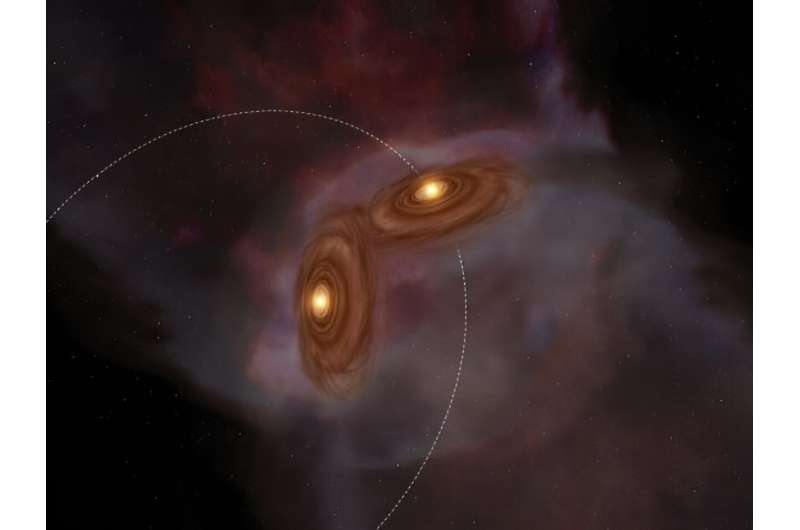This article has been reviewed according to Science X's editorial process and policies. Editors have highlighted the following attributes while ensuring the content's credibility:
fact-checked
preprint
trusted source
proofread
Misaligned binary star systems are rogue planet factories, finds study

Most of the planets in the universe orbit a star. They are part of a system of planets, similar to our own solar system. But a few planets drift alone in the cosmos. For whatever reason, be it a near collision or slow gravitational perturbations that destabilize its orbit, these planets are cast out of their star system and sent adrift. These rogue planets are notoriously challenging to find, but as we start to discover them we're finding they are a bit more common than we'd thought. Now a new study posits a reason why.
For a single-star planetary system such as ours, a planet would either need a near-collision to be thrown out of the system, or there would need to be a close cluster of planets to gradually destabilize a world. We know from the evolution of our solar system that planets have shifted in their orbits significantly, and we know that the Earth and moon formed when a Mars-sized world struck Earth in its youth, so rogue planets could come from systems like ours. But simulations show that the number of rogue planets a single-star system produces is relatively small.
So in this new study, posted to the arXiv pre-print server, the team focused on binary star systems. In particular, they focused on tilted binary systems, where the orbital plane of each star's planetary system is shifted from the other. They ran computer simulations of these kinds of systems, both when the binary stars orbit each other in a fairly circular path and when they have a highly elliptical path. They then compared the results of these simulations to those of single-star systems.

What they found was that while in single-star systems planets need to be closely spaced to create a rogue planet, in binary systems planets can be widely spaced and still generate rogues. The combination of gravitational tugs from both the stars and other planets is sufficient to destabilize the orbits of some planets. In general, the largest planet of the system remains stable and can destabilize the orbits of smaller planets. Based on their simulations, if the two stars have a circular orbit, then the presence of a Neptune-sized world is enough to generate rogue worlds. If the binary stars orbit each other in an elliptical orbit, then the presence of a super-Earth is enough to generate rogue planets.
Most of the rogue planets we have discovered so far have been very large gas planets. If this model is correct, then there are vastly more smaller worlds adrift in the galaxy. Given how common super-Earths are around red dwarf stars, the Milky Way could be filled with small, rocky rogue planets. The challenge will be to find them in the cold dark of interstellar space.
More information: Cheng Chen et al, Tilted circumbinary planetary systems as efficient progenitors of free-floating planets, arXiv (2023). DOI: 10.48550/arxiv.2310.15603
Journal information: arXiv
Provided by Universe Today



















